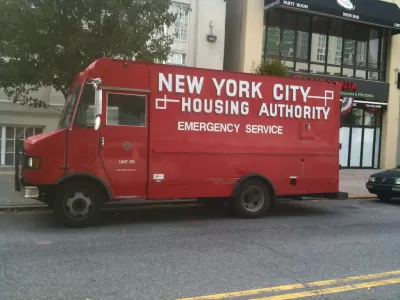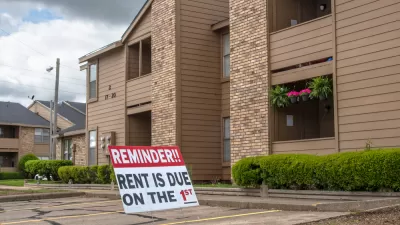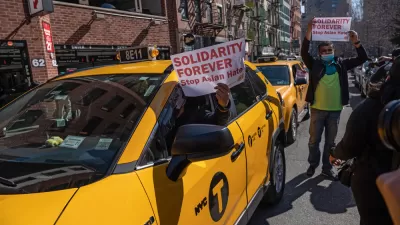How the Joint Ownership Entity NYC is helping its community developer members stay strong during COVID.

Peter Madden does asset management for a portfolio of around 2,200 units of primarily low-income, subsidized housing across New York City. And yes, most of the time, asset management for housing is as boring as it sounds, even now, during a pandemic that has millions of tenants on the verge of eviction.
The thing is, asset management isn’t supposed to be exciting. There are lots of tasks associated with it, but what asset management boils down to is making sure that there is enough cash flow from the portfolio being set aside today to cover for maintenance or modernization the buildings will need tomorrow. It’s the kind of work that, when it’s done well, doesn’t make headlines. But when it’s done poorly, it looks like headlines about squalid living conditions that no one should have to endure.
As executive director of JOE NYC, short for Joint Ownership Entity NYC, Madden has a portfolio unlike any other in New York City. He doesn’t report to one developer or a lead investor who might be in the business of squeezing the properties for as much profit as possible. He currently reports to 11 community development corporations, each representing a slice of JOE’s portfolio.
Established in 2017, JOE NYC jointly owns housing with each member CDC. The idea is that combining at least part of each CDC’s portfolio into joint ownership with JOE NYC creates an entity with a larger balance sheet, which has the ability to negotiate better bulk purchasing deals from utilities, insurance companies, contractors, and building supply companies, as well as better interest rates from lenders to finance rehab and other projects—the basic tasks of asset management. While these CDCs have been doing asset management with their respective portfolios for years, changes in the real estate landscape spurred them to create JOE NYC.
Since asset management operates on a timeline of years, not months or weeks, in this moment of the COVID-19 pandemic, Madden isn’t thrown for a major loop.
He’s working now on how much cash JOE NYC will be able to set aside from last year and this year so that it can create a cushion for its portfolio buildings as it plans for a protracted economic downturn. Meanwhile, the CDC members’ sense of collaboration has deepened as they are now bound closer together financially.
“It’s not only a financial cushion, but … you feel like somebody’s got your back, group to group and to JOE,” says Ismene Speliotis, executive director of Mutual Housing Association of New York, a JOE NYC founding member.
....
FULL STORY: How Scaled Affordable Housing Asset Management Helps in the Time of COVID

Trump Administration Could Effectively End Housing Voucher Program
Federal officials are eyeing major cuts to the Section 8 program that helps millions of low-income households pay rent.

Planetizen Federal Action Tracker
A weekly monitor of how Trump’s orders and actions are impacting planners and planning in America.

Ken Jennings Launches Transit Web Series
The Jeopardy champ wants you to ride public transit.

From Planning to Action: How LA County Is Rethinking Climate Resilience
Chief Sustainability Officer Rita Kampalath outlines the County’s shift from planning to implementation in its climate resilience efforts, emphasizing cross-departmental coordination, updated recovery strategies, and the need for flexible funding.

New Mexico Aging Department Commits to Helping Seniors Age ‘In Place’ and ‘Autonomously’ in New Draft Plan
As New Mexico’s population of seniors continues to grow, the state’s aging department is proposing expanded initiatives to help seniors maintain their autonomy while also supporting family caregivers.

USDOT Waters Down Self-Driving Car Regulations
The agency is reducing reporting requirements for autonomous vehicles and cars with self-driving features, prompting concern among safety advocates who say transparency is essential to the safe deployment of AV technology.
Urban Design for Planners 1: Software Tools
This six-course series explores essential urban design concepts using open source software and equips planners with the tools they need to participate fully in the urban design process.
Planning for Universal Design
Learn the tools for implementing Universal Design in planning regulations.
Heyer Gruel & Associates PA
Ada County Highway District
Institute for Housing and Urban Development Studies (IHS)
City of Grandview
Harvard GSD Executive Education
Toledo-Lucas County Plan Commissions
Salt Lake City
NYU Wagner Graduate School of Public Service





























